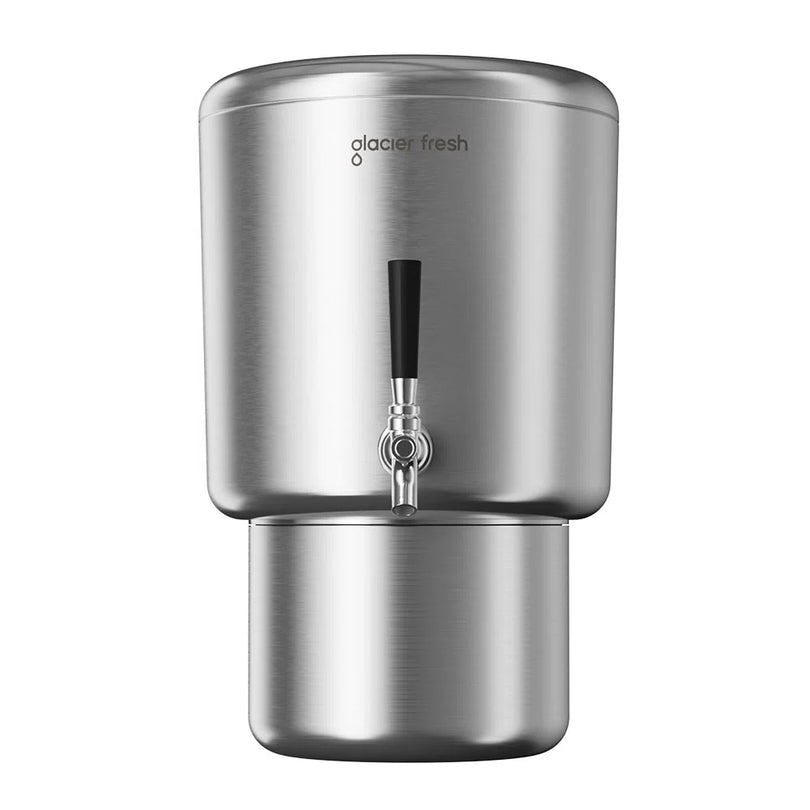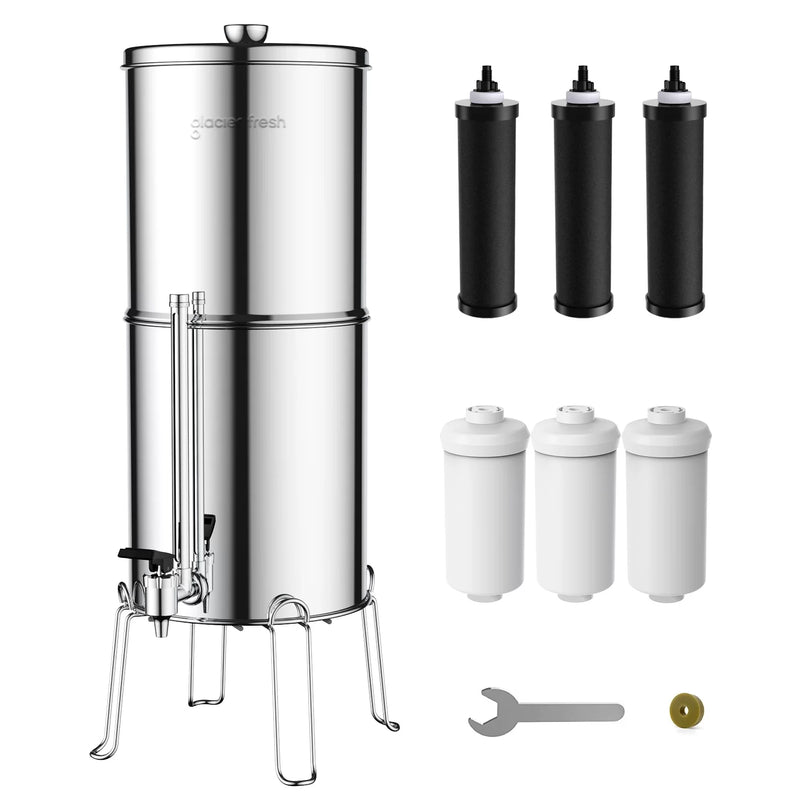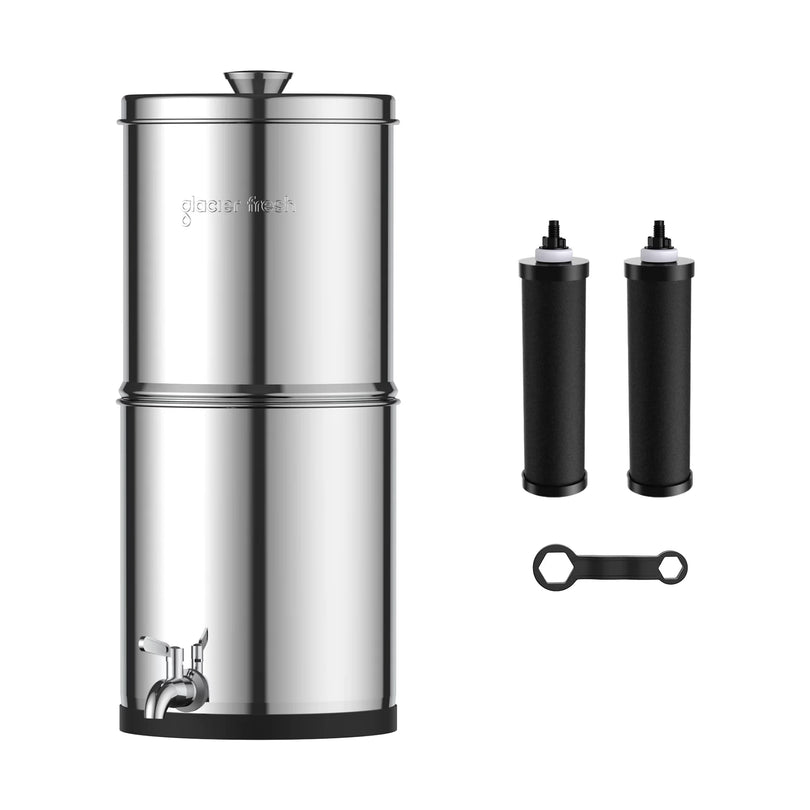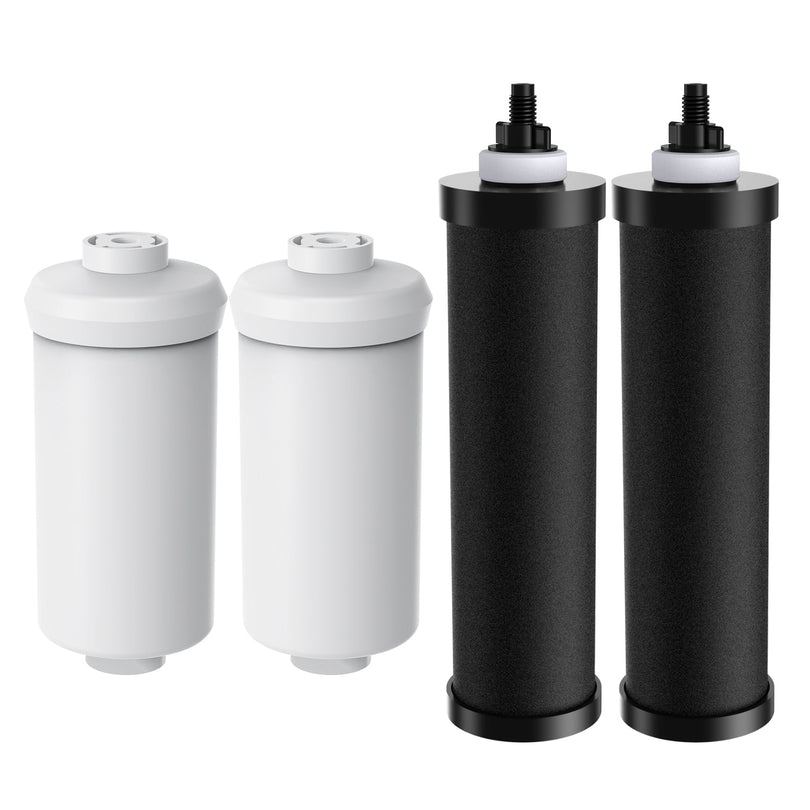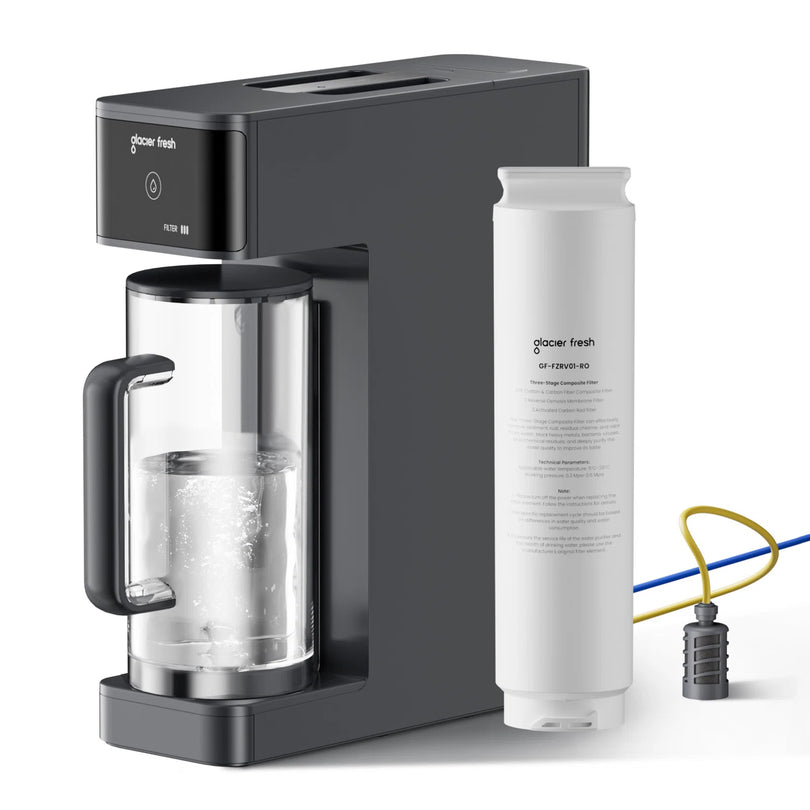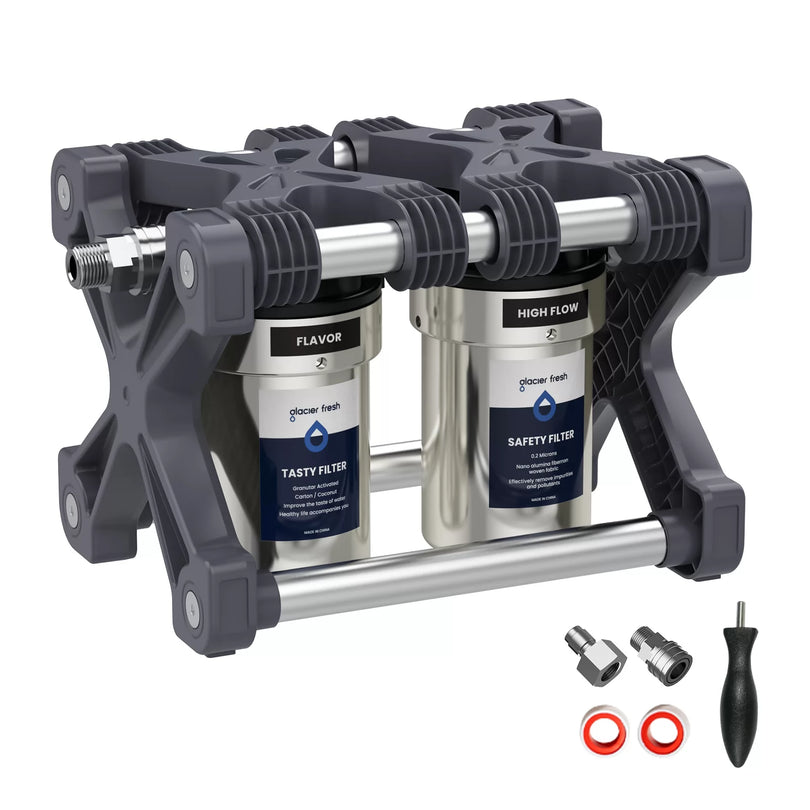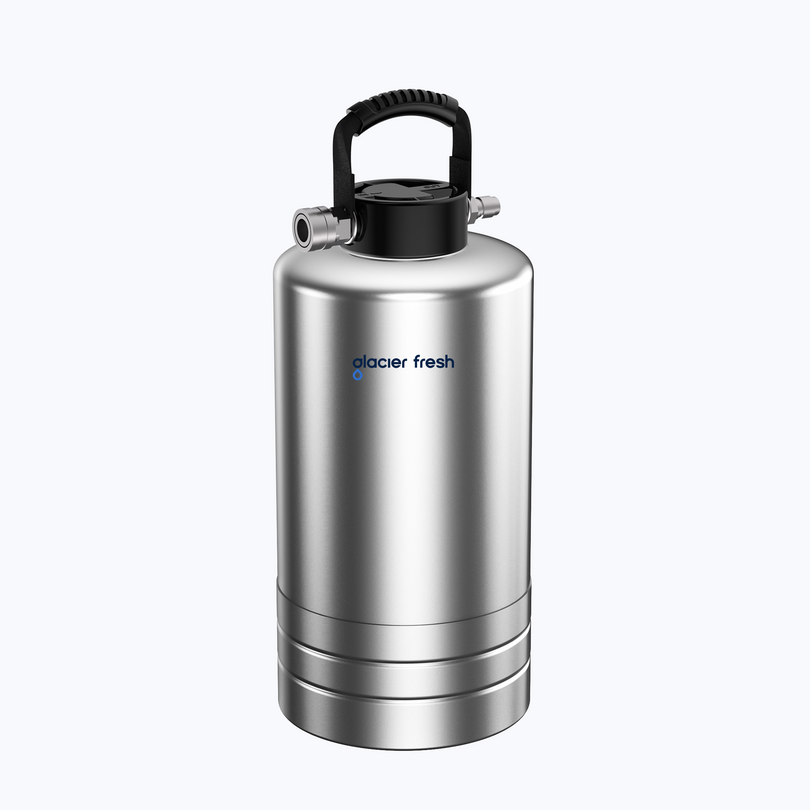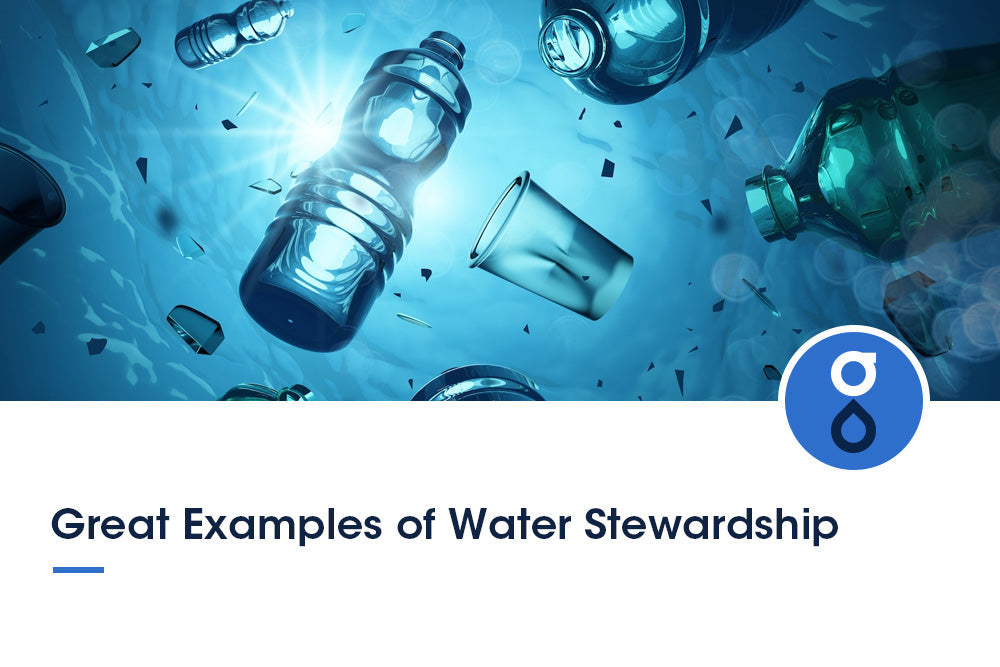Table of Contents:
What is TDS(Total Dissolved Solids) in Water?
What TDS Doesn’t Tell You About Water Quality
What a TDS Measurement Does and Doesn’t Mean
Why Is My Filtered Water Showing Higher TDS?
How do I Determine the Performance of my Fridge Filter?
How the Glacier Fresh Water Filter Affects TDS and Water Quality
Understanding TDS Readings with Glacier Fresh Filters
How Carbon Filters Impact TDS Levels?
How Carbon Block Filters Work in Water Filtration
Does a High TDS Reading Mean My Fridge Filter Is Faulty?
Summary
TDS stands for Total Dissolved Solids, the total concentration of dissolved inorganic salts and organic matter in water. The level of TDS is measured in parts per million (ppm) and can be found through a lab analysis or estimated with a TDS meter.
But why should you care about TDS? Well, the amount of TDS in your water will impact how well your fridge filter works. It will also determine whether you need to replace your filter more often or upgrade to a different kind of filter altogether.
What is TDS(Total Dissolved Solids) in Water?

Expressed in milligrams per liter (mg/L) or parts per million (ppm), TDS (total dissolved solids) is the overall concentration of all inorganic and organic constituents in drinking water.
The EPA (Environmental Protection Agency) defines dissolved solids as a secondary contaminant of drinking water. They’re not as toxic as their primary counterparts and usually manifest in color and taste issues of drinking water.
Examples of dissolved solids in drinking water:
- Aluminum
- Magnesium
- Calcium
- Potassium
- Bicarbonates
- Lead
- Pesticides
- Herbicides
- Sulfates
- Copper
- Iron
- Zinc
- Arsenic
What TDS Doesn’t Tell You About Water Quality
TDS is just a number that shows you how much stuff is dissolved in your water. And because it doesn’t tell you how much of each mineral and chemical is in your water, you can’t be sure whether it's safe to drink. Even with a zero TDS reading, there could still be harmful toxins and pathogens lurking in your water.
What a TDS Measurement Does and Doesn’t Mean
TDS doesn’t refer to any particular mineral or chemical—it’s simply a way of measuring the overall concentration of dissolved organic and inorganic substances in your water. So, it won’t precisely tell you anything about whether they're harmful or not. For example, while you might prefer mineral-rich spring water, it can also contain disease-causing bacteria.
There are different levels of purity considered safe for human consumption. If your supply exceeds these standards, you may want to invest in a water filter system or recheck your supply source. Generally, a low TDS reading indicates safer (yet mineral-poor) water, while an abnormally high reading could point to the presence of harmful compounds.

- How to Calculate Your TDS
TDS meters are the best way to measure dissolved solids in your water. They come in varying designs, but they all work by measuring the sample’s electrical conductivity in parts per million (PPM). The meter then displays this number on its digital readout.
The process is straightforward. Fill up a glass with water from your supply and another with a sample from your fridge water dispenser. Measure the TDS of the two samples. Next, subtract the pre-filtration figure from the post-filtration number to determine the TDS amount eliminated from your supply.
Finally, plug those numbers into this formula to calculate your filter’s percentage TDS rejection rate:
% TDS rejection = Tap TDS-Filter TDSTap TDS
So, suppose you have a reading of 200 ppm dissolved solids in your tap water, and your fridge filter removes 85% of those. For every 100 ppm of dissolved solids in your supply, your filtered water will contain only 15 ppm TDS.
Beware of a sales representative trying to pitch you an expensive fridge filter that’s quoted to remove all dissolved solids from your supply water. Without a clearer picture of the water composition, you might end up buying something more expensive than you need. Furthermore, ridding your water of all the dissolved solids means losing beneficial minerals like magnesium and calcium.

Why Is My Filtered Water Showing Higher TDS?
It’s nothing unusual. The most common culprit is the filter media. One example is coconut shell carbon media. They’re particularly flaky in the first stages of use, contributing to tiny, harmless carbon particles attributed to an elevated post-filtration TDS reading.
You can expect these particles to reduce after several runs of water runs through your filtration system. And even if they never fully disappear altogether, you should still get great-tasting, mineral-rich, and safe water from your fridge water dispenser.
How do I Determine the Performance of my Fridge Filter?

Start with identifying the contaminants or water quality issues your fridge filter targets. Some filters trap more contaminants than others. For example, carbon filters remove chlorine, chloramines, and volatile organic compounds (VOCs). On the other hand, a reverse osmosis (RO) filter handles most dissolved solids and some pathogens.
Test the water for contaminants before and after filtration. If the results show lower contaminants level after filtration, your filter is doing its job just fine. However, if there’s no difference between pre and post-filtration results, your need replace your refrigerator water filter might be necessary.
However, carbon filters don’t handle dissolved solids. In this case, tasting and smelling the filtered water should give you an idea of how well the filter is doing its job.
High-quality carbon filters, such as refrigerator water filter replacements, address various water quality culprits beyond chlorine and chloramines. That includes lead, pathogens, and other toxins not detected by a TDS tester.

How the Glacier Fresh Water Filter Affects TDS and Water Quality?
Glacier Fresh water filter is engineered to remove the worst of what’s in your drinking water while leaving behind all valuable minerals that keep our bodies strong (think calcium, magnesium, and potassium). It’s an NSF/ANSI-compliant triple filtration system tested to remove 97.9% chlorine and particles as small as 0.5 microns (34-362X smaller than the width of a human hair).
Three-stage purification ensures you get the most out of your water. Particle filtration removes larger contaminants, while microfiltration removes medium pollutants. Finally, the water flows through the adsorption layer responsible for catching microscopic pollutants.
The best part is that our products filter out these impurities without compromising the healthy mineral content of your drinking water.
Understanding TDS Readings with Glacier Fresh Filters
You might get higher post-filtration TDS readings from a Glacier Fresh filter. That’s primarily due to carbon fines left over from the filter element drying out, which is a normal part of how these filters work. Some Glacier Fresh filters use an ion exchange media that leaks ions (another component of TDS) into the filtered water, leading to higher TDS readings.
How Carbon Filters Impact TDS Levels?
Carbon filters can help with chlorine, taste, and odor. But what about other contaminants? Available are submicron carbon filters designed to catch several hazardous contaminants that a regular carbon filter would otherwise leave behind. Pore sizes of less than 1 micron ensure finer contaminants get eliminated from your water without necessarily affecting the healthy mineral content. For example, a 0.3 µm filter will allow particles less than 0.3 microns in size—and block anything bigger than that.
How Carbon Block Filters Work in Water Filtration
Carbon block filters are made of coconut shell or coal compressed and heated to create pockets. These pockets act like tiny sponges, trapping contaminants and impurities in the water as it flows through the filter. There are five steps to the filtration process:

Particle Filtration
A carbon filter’s first barrier of defense is to capture large contaminants like sand, fibers, and silt. These items are too big to be filtered by the later stages of the process—they'd clog up everything else.
Physical Adsorption
Imagine taking a piece of gum out of your mouth and sticking it to the bottom of your shoe—that’s physical adsorption. It’s where particles stick to the surface of the filter element without any chemical reaction.
Massive Surface
The multitude of densely packed carbon particles increases the filter’s surface area, increasing the amount of space available for contaminants.
0.5 μm Pore Size
This pore size allows valuable minerals through while restricting pollutants larger than 0.5 microns from passing through (like lead or mercury).

Chemical Adsorption
It’s when chemical interactions occur between atoms or molecules in the filter and cause change to one or more of the compounds involved. Typical reactions include reduction and catalytic decomposition.
An example of reduction is when carbon (C) reacts with chloramine (NH2Cl) and water to produce ammonia (NH3), hydrogen ions (Hᐩ), chlorine ions (Cl⁻), and carbon monoxide (CO).
C* + NH2Cl + H20 → NH3 + H+ + Cl- + CO
Does a High TDS Reading Mean My Fridge Filter Is Faulty?
The answer is No.
The TDS measurement is too broad to provide an accurate insight into your filter's performance. It's the same as measuring calories in a salad and calling it "healthy." Sure, technically, it's true—but what about the ingredients?
A positive reading indicates mineral-rich water, which can be good or bad depending on the minerals present.
TDS readings can vary widely, depending on where you live and the type of filter. If you take a reading at one location but then move to another with different levels of minerals, TDS will change accordingly. If you're using a reverse osmosis filter in an area with low mineral levels in the source water, it might read as zero.
Water with zero TDS is essentially dead, with a bland taste and zero minerals and vitamins. That’s not something you want to ingest. And while water with above-average TDS may be good for you because of its mineral content, it might also contain unhealthy elements like lead or arsenic.
So while a positive TDS reading doesn’t necessarily mean anything is wrong with your filter, it doesn’t necessarily mean everything is right with your water. The best way to know if your water filter is working as intended is by testing for specific contaminants it targets, not just the concentration of minerals.

Summary
TDS isn’t a be-all, end-all measurement for water quality. Instead, it’s part of a broader snapshot of your water's overall makeup, which can include both good and bad constituents. However, there are some circumstances where higher TDS could potentially mean unwanted chemicals being present in your drinking water. In that case, a “better safe than sorry” approach might warrant an in-depth water quality test.
If you’re looking for a cost-effective way to enjoy fresh, clean drinking water from your fridge water dispenser, look no further than Glacier Fresh filters. Our customers get NSF/ANSI-certified products carefully engineered from premium raw materials to offer superior protection against several impurities, chlorine, and bad tastes and odors. All while maintaining the beneficial minerals. Feel free to browse our selection of fridge filters or message us online for more information. Follow Glacier Fresh to find more water filtration solutions.





